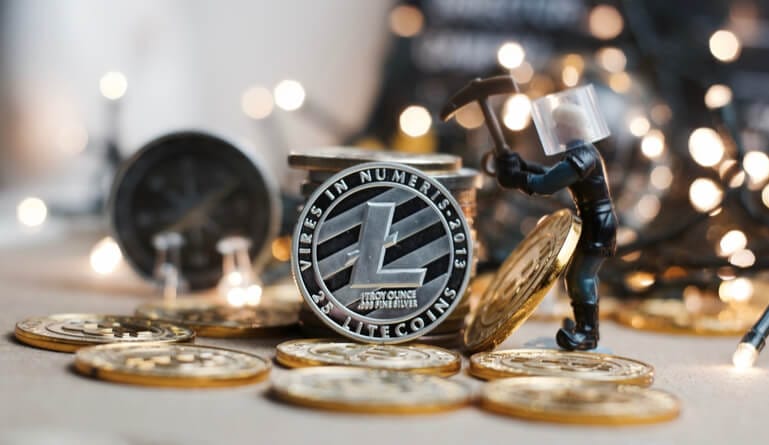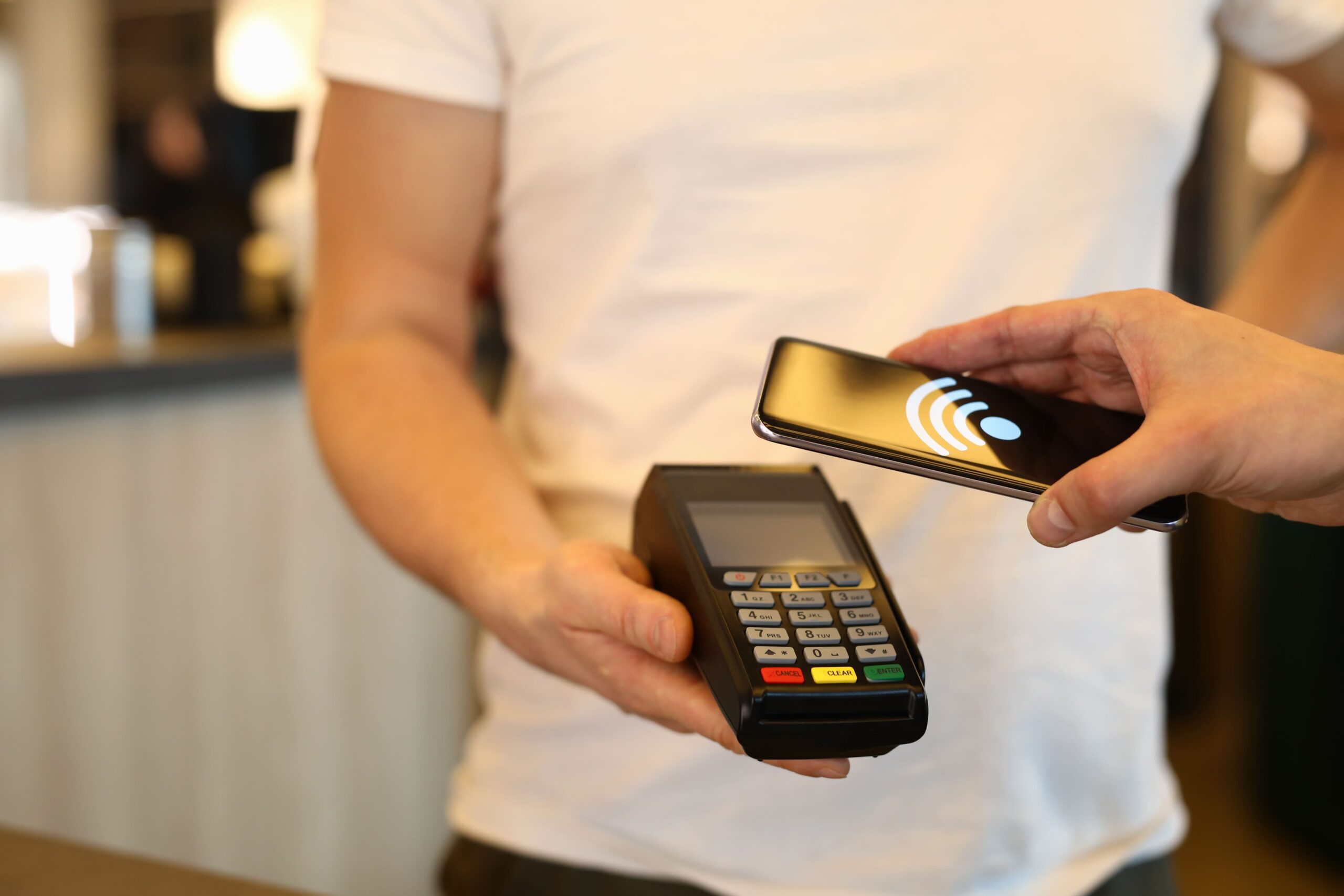Cryptocurrencies like Bitcoin and Litecoin are created through a process called mining. For these two cryptocurrencies, the mining process is based on the Proof of Work (POW).
Cryptocurrency transactions are recorded in a sequence that when validated becomes a permanent public record of all the transactions. Every transaction is added to the sequence in order to form a specific block of transactions that has an exact digital memory limit of file size. These blocks are added to each other to form a blockchain.
The process of creating a blockchain is called mining. The miners receive payment in newly created cryptocurrency for the POW they do in order to validate transactions with the complex mathematical calculations (algorithms) necessary to make a blockchain.
What is Bitcoin Mining?
Bitcoin was the first cryptocurrency that debuted in 2006. It is based on open source software that has been subsequently used and modified to create many other cryptocurrencies, called, as a group, “altcoins.” One very popular altcoin is Litecoin.
The reward for mining Bitcoins started in 2006 at 50 Bitcoins per block. This reward was designed to be cut in half once certain levels of Bitcoins had been created. It has been halved twice. The current reward rate in 2019 is 12.5 Bitcoins per block, which is expected to be halved again sometime in 2020 to 6.25 Bitcoins per block. There are about 17.8 million Bitcoins in circulation (June 2019) and only around 3.2 million more to be mined.
After all the Bitcoins have been mined, miners will still be rewarded for creating blockchains by receiving transaction fees. The Bitcoin transaction fee now averages around $4; however, a Bitcoin seller or buyer can set the fee from zero to any amount. Miners select the transactions, in the order that they want to add them to a block, according to the transaction fee reward that they get. This means there is no standard fee; instead, they receive a fee based on an auction-like methodology, competing with other miners.
Bitcoin Mining for Beginners
Mining of Bitcoins for beginners is considered not very suitable. It is too difficult now and too expensive. Bitcoin mining requires specialized computer-processing equipment in order to be economically viable. These computer systems cost many tens of thousands of dollars.
The Bitcoin mining process uses an extreme amount of electricity and computational capability. In fact, depending on the electricity cost, it is not profitable to mine Bitcoins in many parts of the world where the electricity is too expensive.
EliteFixtures conducted a 2018 survey of the worldwide cost to mine a single Bitcoin and found that it ranged from a low of $531 (Venezuela) to the high of $26,170 (South Korea). In China, the cost was $3,172 and in the USA $4,758.
Bitcoin sold for as high as $19,786 at its peak price on December 17, 2017, and now is around $12,000.
Profits from mining Bitcoins come from mining them and then selling them on a cryptocurrency exchange. The difference between the price that Bitcoins can be sold and what it costs to make them (including the data center, computers, and electricity) is the profit.
Bitcoin Mining Pool
There are only a few hundred professional cryptocurrency mining operations in the world. To build a cryptocurrency facility requires a secure climate-controlled data center, plenty of specialized computers, and modestly priced electricity.
A Bitcoin mining pool is a group of computers that may be owned and maintained by different parties that do the complex computational work together to mine the Bitcoins.
Most of the major Bitcoin mining pools are in China in areas where the electricity is reasonably cheap and the best-priced, specialized Bitcoin mining computers are readily available. The problem now is that China has already announced plans to make cryptocurrency mining illegal. Soon, these operations will be forced to move elsewhere.
Difference Between Bitcoin and Litecoin
Bitcoin was the first cryptocurrency to come out in 2009. Litecoin came out in 2011. Litecoin was developed from the Bitcoin open source software, which was modified to improve transaction speed and reduce transaction costs.
Investopedia reports that Litecoin has a higher maximum limit of coins that can be produced, which is 84 million compared to Bitcoin at 21 million. Transaction clearing with Litecoin averages 2.5 minutes and with Bitcoin it is about 10 minutes, depending on the global transaction volume.
How to Mine Litecoin
Litecoin was designed to be easier to mine than Bitcoin. While Litecoin does require a certain kind of computer, a fast CPU or GPU, these computers are consumer versions and not hard to find. One way of how to get Litecoin is that beginners can mine Litecoin.
Currently, the reward for mining a blockchain of Litecoins is 25 Litecoins per block. This reward goes down by half about once every four years until a total of 84 million Litecoins have been mined. As of 2019, there are about 24 million Litecoins to be mined.
Bitcoin vs. Litecoin Mining
The complexity of mining cryptocurrency depends on the algorithms used. Bitcoin uses the SHA-256 algorithm. Litecoin uses the Scrypt algorithm. Litecoin blocks are one-fourth the size of a Bitcoin block. This means that mining Litecoins is about four times faster than mining Bitcoin.
Bitcoin requires specialized computers that are designed just to mine Bitcoin that work with Application-Specific Integrated Circuits (ASICs).
Litecoin can be mined using regular CPUs and more quickly using Graphical Processing Units (GPUs) that are computers usually used to play video games. Litecoin is designed to be easier to mine with parallel processing. This is using many computers at the same time working together with the best cryptocurrency mining software.
Beginners, who are interested in learning how to mine cryptocurrency, will likely have a better result if they focus their efforts on mining Litecoin. The entry-level cost is far less, and it is much easier to get started because the Litecoin system design uses less expensive, consumer computers. They are plenty of Litecoins still to be mined and the reward is good for doing this work.
Also, Litecoin is making very good inroads in being accepted by merchants to pay for things. For example, there is now acceptance of Litecoin to pay through TravelbyBit for airline flights and hotels. This is an important indication that Litecoins will continue to be valuable and useful in the near future.
So, go ahead and get started mining Litecoins for a good result and join a Litecoin mining pool to learn faster.




